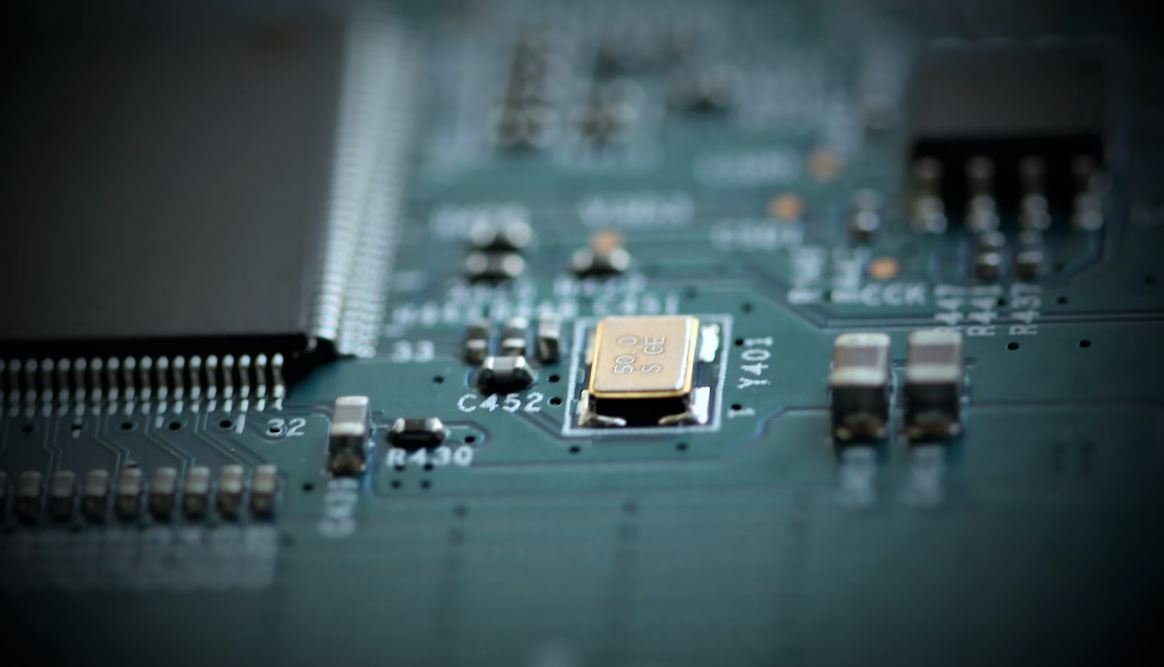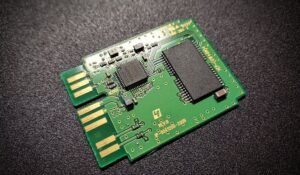Which Tesla Is Better?
Tesla, founded in 2003, has revolutionized the electric vehicle (EV) industry with its innovative designs, cutting-edge technology, and commitment to sustainability. With several models available, it can be challenging to determine which Tesla is the best fit for your needs. This article aims to compare two popular Tesla models, the Model S and the Model 3, to help you make an informed decision.
Key Takeaways:
- Comparing the Tesla Model S and Model 3 to determine which is better.
- Examining key features, performance, and pricing of both models.
- Highlighting the advantages and disadvantages of each model.
- Considering individual preferences and requirements when choosing a Tesla.
Model S vs. Model 3
**The Tesla Model S** was the first fully electric sedan introduced by Tesla in 2012. It offers **luxury and high performance** with its sleek design and powerful electric drivetrain. *The Model S has a longer driving range compared to the Model 3, making it suitable for long-distance travel.* Let’s take a closer look at the key aspects of both vehicles:
1. Design
Both the Model S and Model 3 feature **modern and aerodynamic designs**. However, the Model S has a more **premium look** with its larger size and elegant curves. The Model 3, on the other hand, has a **sleeker and more minimalist design**, appealing to those who prefer a compact and sporty look.
2. Performance
The Model S offers **impressive acceleration and top speed** with its high-performance options. It can go from 0 to 60 mph in as little as 2.4 seconds, making it one of the **fastest production cars** in the world. On the other hand, the Model 3 provides a **fun and agile driving experience**, especially in its Performance variant.
3. Range and Charging
When it comes to range, the Model S has an advantage with **longer driving ranges**, reaching up to 402 miles on a single charge. However, the Model 3 still offers a respectable range, typically around 250-350 miles depending on the trim level. As for charging, both models are compatible with **Tesla’s Supercharger network**, allowing for rapid charging and convenient long-distance travel.
Comparison Tables
| Model | Driving Range | Starting Price |
|---|---|---|
| Model S | Up to 402 miles | $69,420 |
| Model 3 | Average 250-350 miles | $39,990 |
| Model | Acceleration (0-60 mph) | Top Speed |
|---|---|---|
| Model S | As little as 2.4 seconds | Up to 200 mph |
| Model 3 (Performance) | 3.1 seconds | Up to 162 mph |
| Model | Dimensions | Seating Capacity |
|---|---|---|
| Model S | Length: 196 in Width: 86.2 in Height: 56.9 in |
Up to 7 |
| Model 3 | Length: 184.8 in Width: 72.8 in Height: 56.8 in |
Up to 5 |
Choosing the Right Tesla
Selecting the right Tesla ultimately depends on **individual preferences and needs**. If you prioritize range and luxury, the **Model S** might be the right choice for you. On the other hand, if you are looking for a more compact and affordable option without compromising performance, the **Model 3** could be the better fit.
Remember to consider factors such as seating capacity, cargo space, and budget when making your decision. Test driving both models and exploring their features at a Tesla dealership can also provide valuable firsthand experience that will help you make the best choice for your lifestyle.
Whether you decide on the Model S or Model 3, both Teslas offer incredible **electric performance** and contribute to a **greener future** by reducing fossil fuel consumption. Explore the Tesla lineup and make a decision that aligns with your values, driving habits, and desired features.

Common Misconceptions
1. The more expensive Tesla models are always better
One common misconception people have is that the more expensive Tesla models, such as the Model S, are always better than the lower-priced models, like the Model 3 or Model Y. However, this is not necessarily true. While the higher-priced models may have more advanced features or a longer range, they may not always be the best fit for every individual or use case.
- Lower-priced models often have more affordable maintenance and repair costs.
- The lower-priced Tesla models can still have impressive acceleration and performance.
- Some lower-priced models may offer a better range for city driving.
2. The larger Tesla models are more spacious
Another misconception is that the larger Tesla models, such as the Model X or Model Y, offer more interior space compared to the smaller models like the Model 3. While the larger models do have more seating capacity and cargo space, the actual interior space for passengers might not be significantly different.
- The interior dimensions of the Model 3 can feel spacious due to its minimalist design.
- The larger models may have more headroom, but legroom can be comparable across different Tesla models.
- The Model 3 might provide a more intimate driving experience due to its smaller dimensions.
3. All Tesla models have the same charging capabilities
There is a misconception that all Tesla models have the same charging capabilities, regardless of the model or year. In reality, Tesla has made significant improvements to its charging technology over the years, and the charging capabilities can vary between models.
- Newer Tesla models may support faster charging speeds and have access to the Supercharger V3 network.
- Some older Tesla models might require an additional adapter for certain charging stations.
- The charging range for each model may also vary, affecting how often you need to stop and charge during long trips.
4. The performance of all Tesla models is the same
People often assume that all Tesla models perform the same way, in terms of acceleration and top speed. While Tesla vehicles are known for their impressive speed and acceleration, the performance can vary between models.
- The higher-priced Tesla models often offer faster acceleration and higher top speeds.
- Newer models may have updated hardware and software configurations that improve performance compared to older models.
- The Model 3 Performance variant offers exceptional acceleration and can outperform some higher-priced models in certain scenarios.
5. All Tesla models are equally safe
Lastly, there is a misconception that all Tesla models are equally safe, regardless of the model or size. While Tesla vehicles do generally receive high safety ratings, factors such as the model’s size and weight can play a role in the level of safety provided.
- Larger Tesla models might offer more protection in collisions due to their size and weight.
- Smaller Tesla models, like the Model 3, have also performed well in crash tests and offer advanced safety features.
- The Model S has been awarded a 5-star safety rating in every category by the National Highway Traffic Safety Administration.

Comparison of Acceleration Times:
Tesla vehicles are known for their incredible acceleration. Here is a comparison of the acceleration times of some of the popular Tesla models.
| Model | 0-60 mph (seconds) |
|---|---|
| Tesla Model S Ludicrous | 2.3 |
| Tesla Model 3 Performance | 3.1 |
| Tesla Model X P100D | 2.9 |
| Tesla Model Y Performance | 3.5 |
Range Comparison:
One of the key factors to consider when purchasing an electric vehicle is its range. Let’s compare the ranges of different Tesla models.
| Model | Range (miles) |
|---|---|
| Tesla Model S Long Range | 402 |
| Tesla Model 3 Long Range | 353 |
| Tesla Model X Long Range | 371 |
| Tesla Model Y Long Range | 326 |
Safety Ratings:
Tesla vehicles are renowned for their safety features. Let’s explore the safety ratings of different Tesla models.
| Model | NHTSA Safety Rating |
|---|---|
| Tesla Model S | 5 stars |
| Tesla Model 3 | 5 stars |
| Tesla Model X | 5 stars |
| Tesla Model Y | 5 stars |
Cargo Space Comparison:
If you often need to carry a lot of cargo, the available space in a vehicle becomes important. Let’s compare the cargo space in different Tesla models.
| Model | Cargo Space (cubic feet) |
|---|---|
| Tesla Model S | 28.4 |
| Tesla Model 3 | 15.0 |
| Tesla Model X | 88.1 |
| Tesla Model Y | 68.0 |
Charging Time Comparison:
The charging time of an electric vehicle can vary. Let’s compare the estimated charging times for different Tesla models.
| Model | Charging Time (Supercharger) |
|---|---|
| Tesla Model S | 15 minutes (for 200 miles) |
| Tesla Model 3 | 15 minutes (for 188 miles) |
| Tesla Model X | 20 minutes (for 170 miles) |
| Tesla Model Y | 15 minutes (for 168 miles) |
Owners’ Satisfaction Ratings:
Let’s take a look at the satisfaction ratings reported by Tesla owners for different models.
| Model | Satisfaction Rating (out of 5) |
|---|---|
| Tesla Model S | 4.8 |
| Tesla Model 3 | 4.6 |
| Tesla Model X | 4.9 |
| Tesla Model Y | 4.7 |
Autopilot Features:
Tesla vehicles come with advanced autopilot features. Let’s explore the capabilities of each model’s autopilot system.
| Model | Autopilot Features |
|---|---|
| Tesla Model S | Full Self-Driving (FSD) |
| Tesla Model 3 | Autopilot with Auto Lane Change |
| Tesla Model X | Smart Summon & Navigate on Autopilot |
| Tesla Model Y | Autosteer & Traffic-Aware Cruise Control |
Pricing Comparison:
Here is a comparison of the starting prices for different Tesla models.
| Model | Starting Price (USD) |
|---|---|
| Tesla Model S | $79,990 |
| Tesla Model 3 | $38,490 |
| Tesla Model X | $89,990 |
| Tesla Model Y | $41,990 |
After comparing various aspects of different Tesla models, it is evident that each model has its own strengths and unique features. The decision on which Tesla is better ultimately depends on individual preferences, priorities, and budget. Whether you value acceleration, range, safety, cargo space, charging time, autopilot features, owner satisfaction, or price, there is a Tesla model that fits your needs. It’s important to thoroughly research and test drive these vehicles to make an informed decision and discover which Tesla suits you best.
Frequently Asked Questions
Question: What are the main differences between Tesla Model S and Model 3?
Answer: The main differences between Tesla Model S and Model 3 are size, price, range, and performance. Model S is a larger luxury sedan with more interior space and a higher price tag. Model 3 is a smaller, more affordable sedan with a slightly shorter range but still impressive performance.
Question: Which Tesla model has the longest range?
Answer: The Tesla Model S currently has the longest range among Tesla models. The latest Model S Long Range Plus version has an EPA estimated range of 402 miles.
Question: Which Tesla model is the fastest?
Answer: The Tesla Model S holds the title for being the fastest Tesla model. The high-performance versions, such as the Model S Performance or Model S Plaid, can accelerate from 0 to 60 mph in under two seconds.
Question: What is the difference between Tesla Model 3 Standard Range Plus and Long Range?
Answer: The main differences between Tesla Model 3 Standard Range Plus and Long Range are range, performance, and some additional features. The Long Range variant offers a longer driving range, slightly faster acceleration, and additional features like a premium audio system and heated seats.
Question: Are all Tesla models all-electric?
Answer: Yes, all Tesla models are fully electric vehicles (EVs). Tesla does not produce any internal combustion engine (ICE) vehicles, so all their cars have zero tailpipe emissions.
Question: Does Tesla offer any SUV models?
Answer: Yes, Tesla offers SUV models. The current SUV lineup includes the Tesla Model X, which is a full-size luxury SUV, and the recently introduced Tesla Model Y, which is a smaller, more affordable compact SUV.
Question: Can I charge a Tesla at home?
Answer: Yes, Tesla vehicles can be charged at home. You can either use a standard electrical outlet for slower charging or install a Tesla Wall Connector for faster home charging. Additionally, Tesla owners can also access Tesla Supercharger stations for rapid charging on the go.
Question: Are Tesla cars more expensive to maintain compared to traditional gasoline cars?
Answer: Generally, Tesla cars have lower maintenance costs compared to traditional gasoline cars. This is primarily because electric vehicles have fewer moving parts and don’t require regular oil changes or transmission maintenance. However, it’s important to consider other factors, such as the cost of replacing the battery in the long run.
Question: Can I take a Tesla on a long road trip?
Answer: Yes, Tesla vehicles are suitable for long road trips. With the extensive Supercharger network, you can find charging stations along major routes, allowing for convenient long-distance travel. Additionally, Tesla’s range and fast-charging capabilities make it a viable option for road trips.
Question: How does Tesla Autopilot work?
Answer: Tesla Autopilot is a suite of driver-assist features designed to enhance safety and convenience. It utilizes a combination of cameras, sensors, and advanced software to control the vehicle under certain conditions. However, it’s important to note that Tesla’s Autopilot system is not fully autonomous and requires the driver’s attention at all times.




